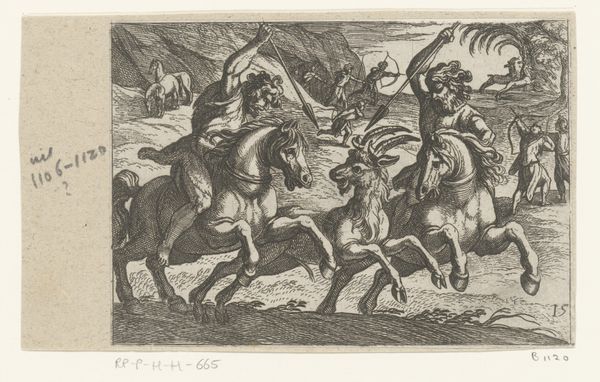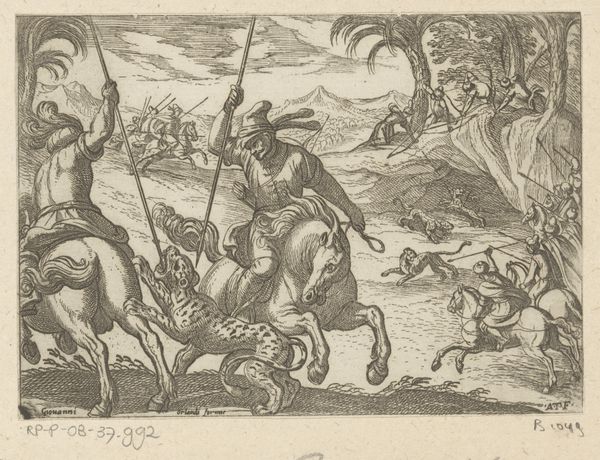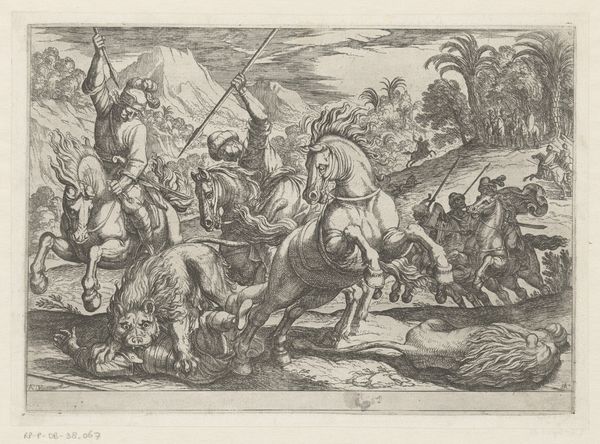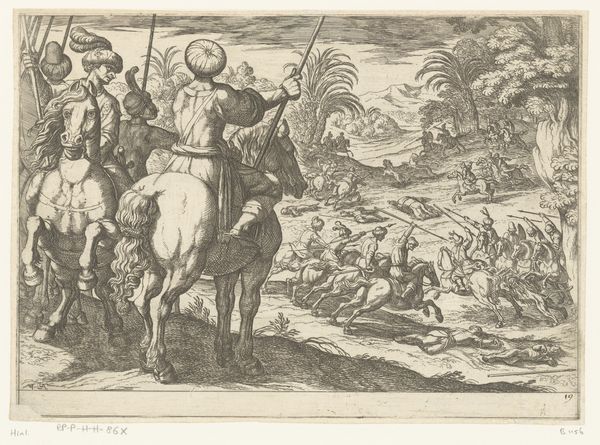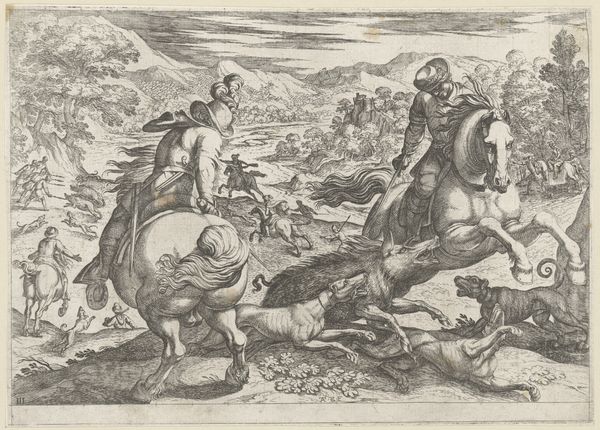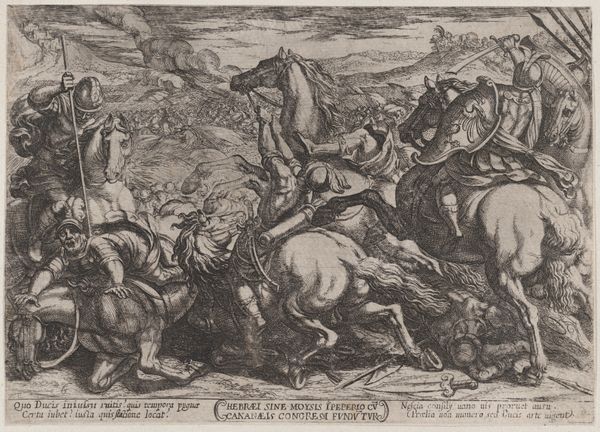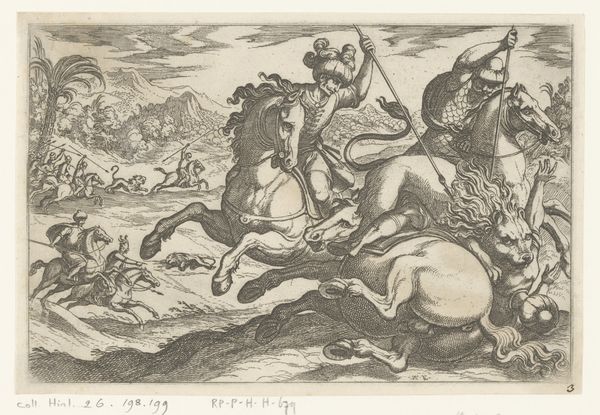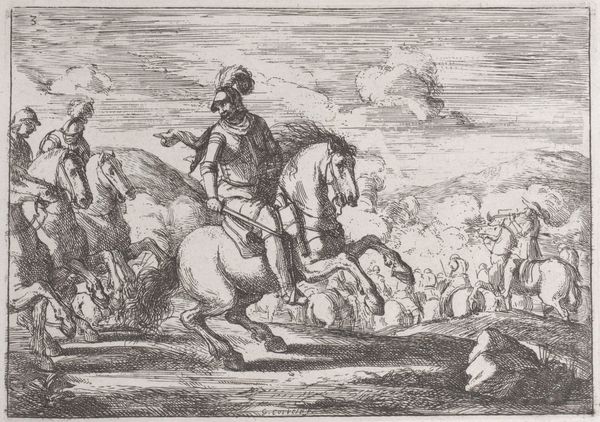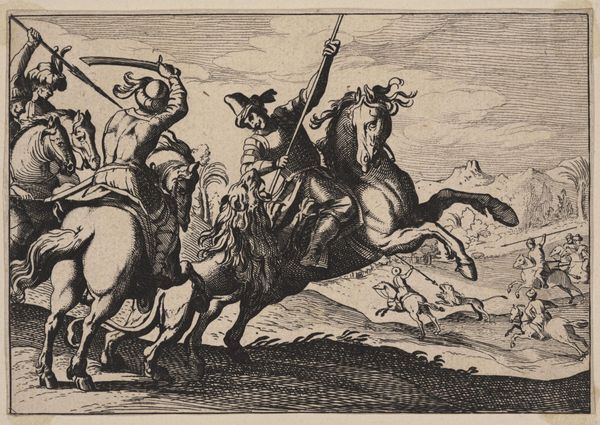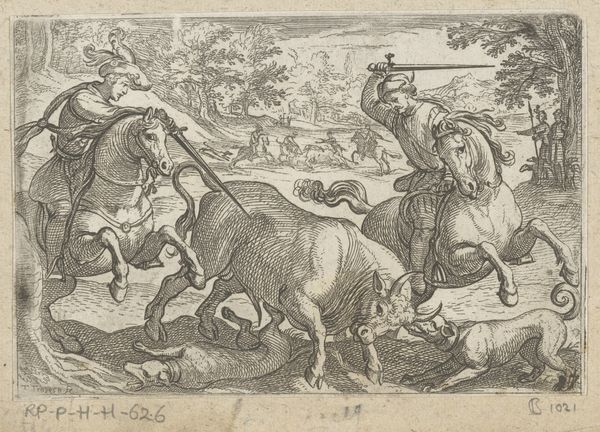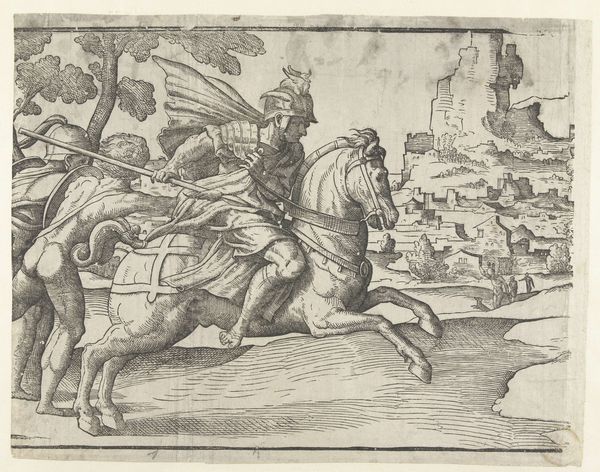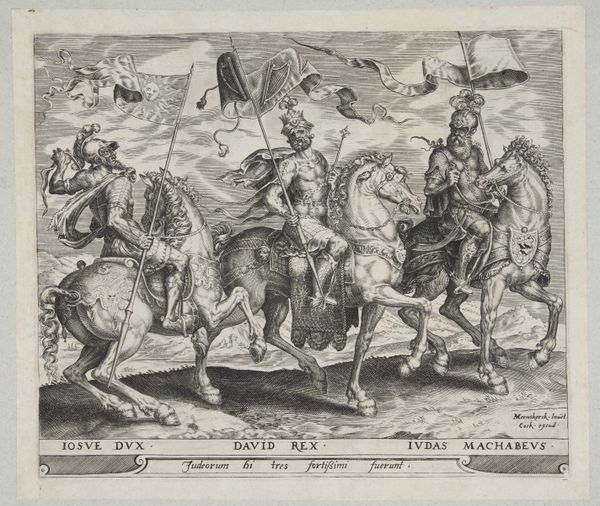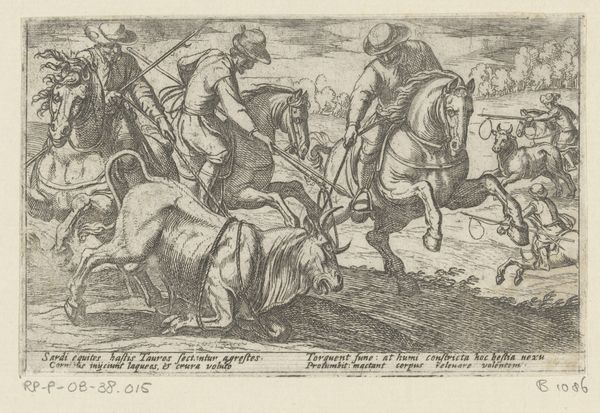
print, etching
# print
#
pen sketch
#
etching
#
landscape
#
figuration
#
genre-painting
#
history-painting
#
italian-renaissance
Dimensions: height 82 mm, width 122 mm
Copyright: Rijks Museum: Open Domain
Curator: Here we have "Mannen te paard doden een leeuw," or "Horsemen Killing a Lion," a print made around 1595 by Antonio Tempesta, currently held in the Rijksmuseum. It’s an etching rendered in a detailed, almost frantic style. Editor: My immediate impression is of organized chaos. The figures and animals are so tightly packed and rendered with such energy. It feels dramatic, almost theatrical, doesn’t it? I'm drawn in, but also slightly overwhelmed by the detail. Curator: Exactly. And if we consider the historical context, images of lion hunts were incredibly popular among European aristocracy. They signified power, courage, and dominance. This wasn’t just sport; it was a political performance. Editor: Absolutely. The print functions as a clear articulation of power dynamics. Look at how the horses and riders are elevated above the lion, literally and figuratively. But beyond simple domination, I read this image as allegorical: it can be seen as emblematic of humankind conquering untamed nature. Curator: That's an insightful interpretation. In terms of style, Tempesta blends elements of Renaissance humanism with a growing interest in more dynamic and baroque compositions. It’s an intriguing point of transition. Note also how the landscape itself acts as a stage. The rolling hills are strategically placed to heighten the drama. Editor: The level of violence is quite overt. How does the print function, viewed through a contemporary lens that challenges such displays of domination and power? Curator: Well, that's precisely the critical question we need to ask. We have to acknowledge the historical context and artistry, yes, but not without unpacking the ideology it perpetuates. Whose stories are prioritized here? What impact does such imagery have? These are uncomfortable yet necessary conversations. Editor: Indeed. Thinking about access too—who could own and disseminate such prints? Not the masses, clearly. It reinforced an elite worldview through distribution. Curator: And still does, in many ways, depending on the audience and context within which it's displayed. It calls us to critically examine its relevance and message in a very different era. Editor: Thanks, that has given me so much to reflect upon further. Curator: My pleasure. I hope listeners will continue this vital conversation.
Comments
No comments
Be the first to comment and join the conversation on the ultimate creative platform.
